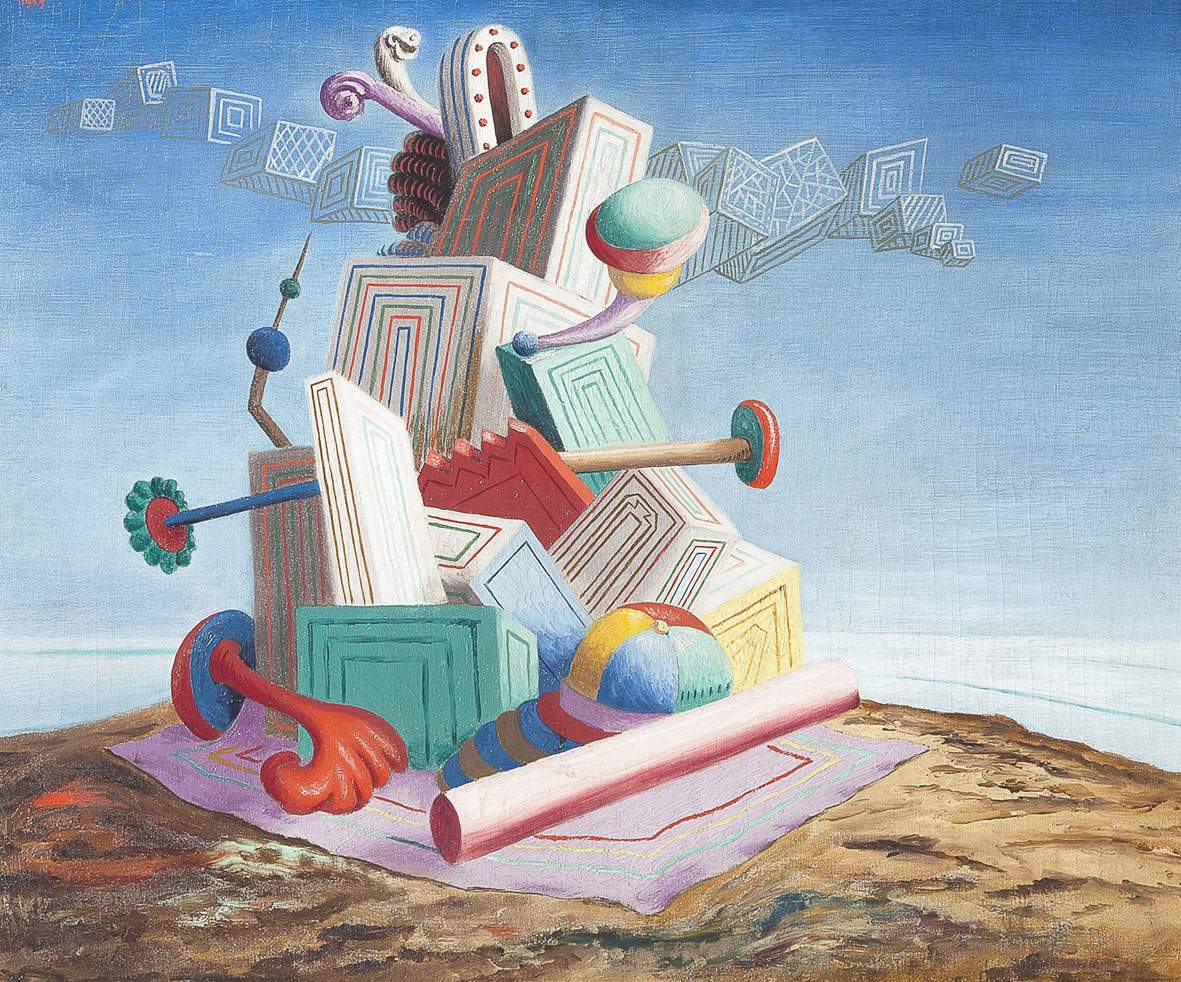From March 16 to June 30, 2019, the Magnani-Rocca Foundation in Traversetolo (Parma) is hosting an exhibition dedicated to Giorgio De Chirico (Volos, 1888 - Rome, 1978) and Alberto Savinio (pseudonym of Alberto De Chirico, Athens, 1891 - Rome, 1952), entitled De Chirico and Savinio. A Modern Mythology. The two brothers rethought myth, the ancient, and the classical tradition through the modernity of the avant-garde and citation, translating and reinterpreting them in an attempt to answer the great enigmas of contemporary man, giving rise to what Breton called a true “modern mythology.” The exhibition, staged at the Villa dei Capolavori, the Foundation’s headquarters in Mamiano di Traversetolo near Parma, presents more than one hundred and thirty works, including famous paintings and surprising graphic works, in an exhibition itinerary that, from the birth of the metaphysical adventure, focuses on a modern rethinking of mythology and reaches the very rich production for the theater, documented also by precious costumes for opera.
The Dioscuri of Art (this is the nickname of the two brothers) “are each other’s explanation,” wrote Jean Cocteau. Close neighbors in the early stages of their respective careers, De Chirico and Savinio worked closely together in their early Parisian years. André Breton called their work “inseparable in spirit”: the visions conceived by Giorgio in those years found a literary counterpart in his brother’s poetics; although credit has been historically attributed to de Chirico’s genius, to this day the role played by Savinio in the elaboration of metaphysical aesthetics is now recognized. The exhibition, curated by Alice Ensabella of the University of Grenoble, and Stefano Roffi, scientific director of the Magnani-Rocca Foundation, aims to critically reconstruct the common sources of the De Chirico brothers in order to highlight their affinities, contrasts and interpretations of the fantastic universe that takes shape in their pictorial, literary and theatrical translations.
Giorgio and Andrea De Chirico were born in Greece, where they spent their entire childhood. Children of an upper middle-class and cosmopolitan milieu, they received a solid and international education, influenced by German romanticism and nihilism, the Parisian avant-garde, and classical Mediterranean culture, Greek certainly, but also profoundly Italian. This very special philosophical, artistic and literary imprinting, forging the minds of the De Chirico brothers in their formative and early years, will result in one of the most original and highest moments of twentieth-century Italian figurative culture.
Despite their common intellectual path, De Chirico and Savinio demonstrated different characters and approaches to artistic practice from a young age. Savinio, a multifaceted figure, started out as a musician and composer, later became a writer, and only came to painting at the age of thirty-five. De Chirico, with a more decisive and granitic personality, identified his path in painting from his adolescence. While the works of both are characterized by themes of common interest such as travel, the mystery of detachment, the poignant emotion of return, questions about the human condition, and the appeal to myth, to the ancient, the interpretations that the two brothers provide are not the same, often arriving at results that are stylistically and iconographically distant. Colder, more mental and conceptual, de Chirico, even after the great metaphysical season, will not renounce representations still imbued with enigmas, which will characterize his landscapes that recall the myths of antiquity, horses among the ruins of Greek civilization, gladiators about to live or die, self-portraits and redundant still lifes. Playfulness and irony, on the other hand, are the hinges around which Alberto Savinio’s aesthetics revolve. Unlike his brother, in fact, Savinio demonstrates an innate ability to inject into the profound metaphysical silences the skillful lightness of irony, which unfolds through a fantastical visionariness. In his works, inanimate objects and animate beings come together in a single colorful and lively representation, in which human and animal forms are confused and decontextualized, placed within impossible perspectives and an atmosphere as improbable as it is playful.
The contributions in the catalog focus on the brothers’ approach to their sources (Nicol Mocchi), as well as their respective paths in the various artistic disciplines in which they have engaged: painting (Alice Ensabella), of course, but also the artist’s book and theater (Mauro Carrera). As the inspirational motifs of the construction of the aforementioned modern mythology are at the heart of this project, two contributions in the catalog focus on more specific aspects of Savinian (Gerd Roos) and dechirican (Daniela Ferrari) iconography.
The exhibition opens daily, including all holidays. Hours: Tuesday through Friday continuous 10am-6pm (box office closes at 5pm), Saturday, Sunday and holidays continuous 10am-7pm (box office closes at 6pm). Also open Easter Monday, April 25, May 1, June 2. Closed Mondays (open Easter Monday). Admission: € 12.00 also valid for permanent collections - € 10.00 for groups of at least twenty people - € 5.00 for schools. Information and group reservations: tel. 0521 848327 / 848148 info@magnanirocca.it www.magnanirocca.it On Saturdays at 4:30 p.m. and Sundays and holidays at 11:30 a.m., 4 p.m., 5 p.m., tour of the exhibition with a specialized guide; reservations can be made by e-mail to segreteria@magnanirocca.it , or show up at the museum entrance while places last; cost € 17.00 (admission and guide).
Image: Alberto Savinio, Tombeau d’un roi maure (1929; oil on canvas)
 |
| Giorgio De Chirico and Alberto Savinio on display at the Magnani Rocca Foundation in Traversetolo |
Warning: the translation into English of the original Italian article was created using automatic tools. We undertake to review all articles, but we do not guarantee the total absence of inaccuracies in the translation due to the program. You can find the original by clicking on the ITA button. If you find any mistake,please contact us.